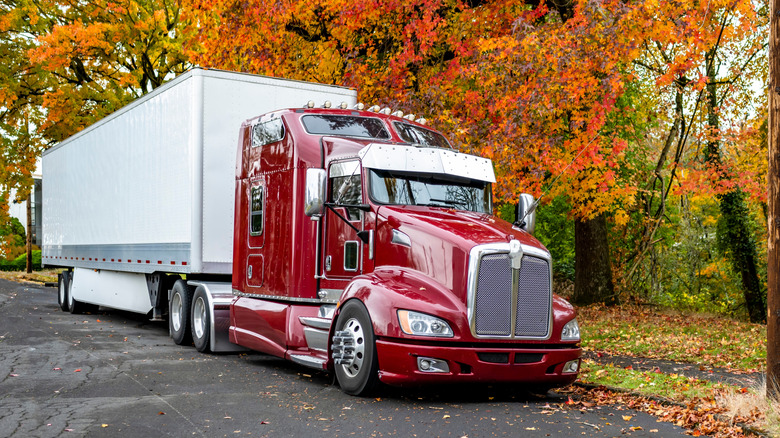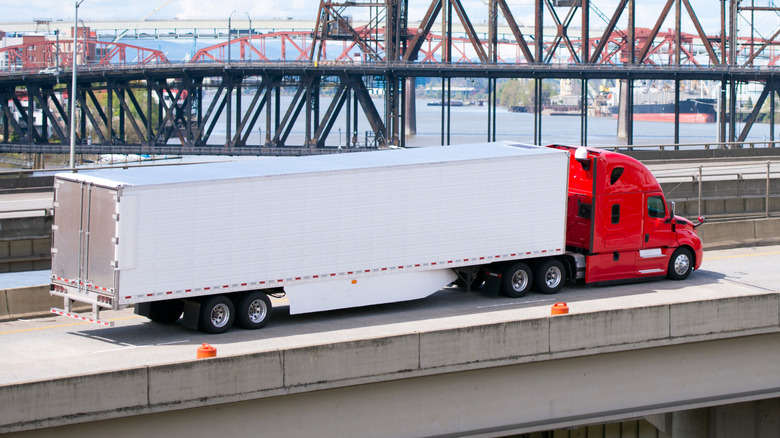Why Do Some Semi-Truck Trailers Have Side Skirts?
Because of their ability to carry massive loads across immense distances, semi-truck trailers are considered a very important element in the logistics and supply chain industry. Carrying everything from toys, food, medicine, appliances, and cars, semi trucks travel an average of 45,000 miles a year. This huge amount of mileage is where the majority of expenses for semi-truck trailers come from, as that distance equates to large fuel costs, especially since the average MPG rating of semi-truck trailers is only between six and seven miles per gallon. To help maximize fuel economy, semi-truck trailers try to improve the aerodynamics of the trucks, and one way to do this is to install side skirts.
Side skirts on semi-truck trailers are aerodynamic devices that help lower wind resistance beneath trailers. This resistance, known as aerodynamic drag, has a detrimental effect on fuel economy, particularly when traveling at high speeds. The way side skirts work is by partially enclosing the gap beneath the trailer; the trailer side skirts reduce the low-pressure area underneath it. The airflow becomes smoother as a result, reducing turbulence and lowering aerodynamic drag.
Made from sturdy materials like metal, plastic, or fiberglass, the side skirts on semi-truck trailers are installed on the underside of the semi-trailer, where it is attached using a combination of rivets, brackets, and struts to the trailer's frame. The length and width of the skirts help reduce the aerodynamic drag caused by air turbulence when the truck is moving.
Better aerodynamics means greater efficiency
For semi-truck drivers and owners, understanding how aerodynamics affects their trucks is crucial given its impact on the truck's performance. As a result of its large size, semi-trucks are affected by aerodynamic drag more than smaller vehicles because of the added weight of their cargo and the large surfaces of the truck. Aerodynamic drag affects many parts of semi-trucks, which include the front of the tractor, the top of the tractor, and the sides and underbody of the trailer.
One of the most important ways to increase a truck's fuel mileage is to optimize its body shape and create effective air and drag management systems. This is why, alongside side skirts, there are several other devices that can be installed on semi-truck trailers that help improve its aerodynamic efficiency. These include trailer tails, cab-side deflectors, roof deflectors, aerodynamic mud flaps, wheel covers, cab extenders, and fender flares. These devices are placed in different locations on the semi-truck, and each helps mitigate the effects of aerodynamic drag.
Together with better fuel mileage, there are further benefits of using side skirts and other aerodynamic devices on semi-truck trailers. These include improved truck stability because of the reduced lateral pressures from crosswinds that can cause a truck to swing or topple over, greater fuel efficiency because the more streamlined the shape, the less fuel the truck uses to reach its destination, and the decreased emissions due to the engine having to work less due to the minimized aerodynamic drag.
Better trucks for tomorrow
The greater impact of using side skirts and other aerodynamic devices can be derived from a recent survey regarding semi-trucks, where it indicated that there are 2.9 million semi-trucks in the United States. On average, semi-trucks consume 20,500 gallons of fuel annually. When combined, this equates to over 59 billion gallons of fuel a year that all semi-truck trailers in America use yearly.
Research conducted on the effectiveness and fuel savings of using side skirts and aerodynamic devices indicates that for large trucks, there are achievable fuel savings from using the devices. Fuel savings range from less than 1% to nearly 9% of the vehicle's fuel cost based on an 80,000-mile yearly travel distance, which, when applied to the total number of semi-truck trailers in the country, could mean 5.3 billion in fuel savings annually.
Semi-truck trailers continue to be the backbone of the national supply chain in the U.S., and continuous improvements are being made to the trucks' engineering and design. Adopting the use of side skirts is a result of the ongoing evolution of semi-truck trailers, and it is reasonable to expect that even more effective aerodynamic devices will be developed to help these trucks become even safer and more efficient in the future.


